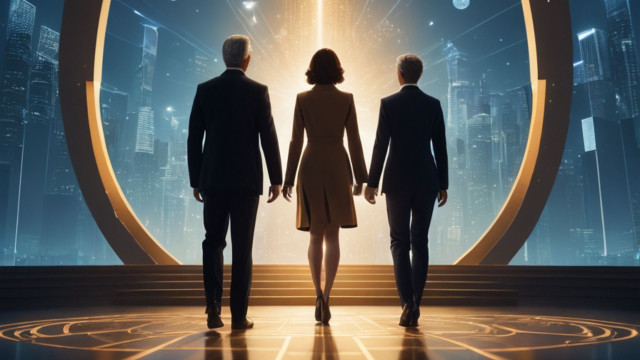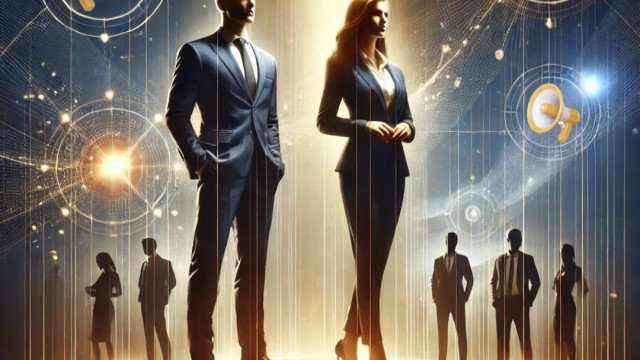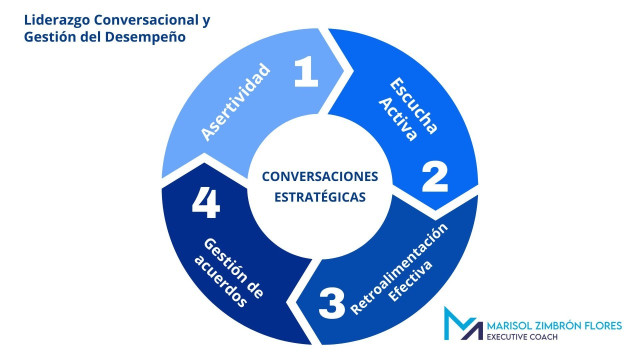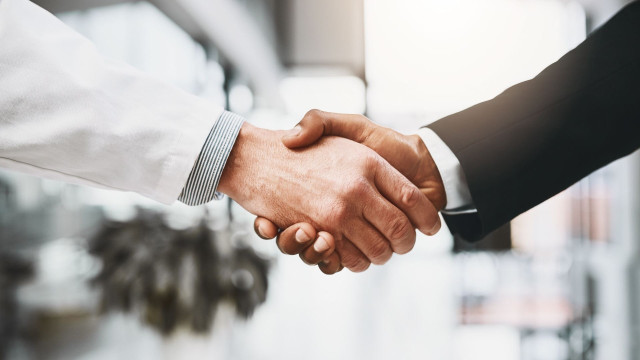

PCC-ICF Executive Coach | Psychoanalyst | L&D Expert | Inclusive Culture Strategist
I specialize in helping leaders and organizations grow through executive coaching, inclusive learning strategies, and organizational culture transformation. As a co-founder of CubicStar, I operate at the intersection of leadership, accessibility, and innovation to create future-ready, human-centered workplaces.
With a background in psychoanalysis, business strategy, and futures thinking, I assist decision-makers in navigating complexity with clarity, intention, and purpose.
My clients include Coca-Cola FEMSA, Comcast, Dow Jones, American Express, and Tec de Monterrey.
Let’s connect if you are focused on strategic leadership, cultural alignment, or meaningful inclusion.
Available For: Advising, Authoring, Consulting, Influencing, Speaking
Travels From: Mexico City
Speaking Topics: purpose-driven and conscious leadership in complex environments, organizational culture alignment by bridging the gap between declared values and live
| Marisol Zimbron | Points |
|---|---|
| Academic | 25 |
| Author | 23 |
| Influencer | 42 |
| Speaker | 10 |
| Entrepreneur | 20 |
| Total | 120 |
Points based upon Thinkers360 patent-pending algorithm.
 The Golden Trap of Experience: When Knowing Too Much Leads to Stagnation
The Golden Trap of Experience: When Knowing Too Much Leads to Stagnation
Tags: EdTech, Social, Startups
 Agile Leadership: The Driving Force Behind Digital Transformation
Agile Leadership: The Driving Force Behind Digital Transformation
Tags: Agile, Digital Transformation, Leadership
 Liderazgo ágil: el motor de la transformación digital en las organizaciones
Liderazgo ágil: el motor de la transformación digital en las organizaciones
Tags: EdTech, Social, Startups
 Liderazgo Conversacional y la Gestión de Equipos
Liderazgo Conversacional y la Gestión de Equipos
Tags: EdTech, Social, Startups
 El Poder de las Conversaciones Estratégicas
El Poder de las Conversaciones Estratégicas
Tags: EdTech, Social, Startups
 Cuando la cultura declarada y la cultura vivida no coinciden: el poder del inconsciente organizacional
Cuando la cultura declarada y la cultura vivida no coinciden: el poder del inconsciente organizacional
Tags: EdTech, Social, Startups
 De Profesional a Referente: Una Ruta de Construcción Estratégica para Potenciar tu Marca Personal con Propósito e Impacto
De Profesional a Referente: Una Ruta de Construcción Estratégica para Potenciar tu Marca Personal con Propósito e Impacto
Tags: EdTech, Social, Startups
 Construyendo Relaciones de Alto Impacto a Través de la Comunicación
Construyendo Relaciones de Alto Impacto a Través de la Comunicación
Tags: EdTech, Social, Startups
 De Profesional a Referente Estratégico: Cómo Alinear tu Valor Profesional con las Prioridades del Negocio
De Profesional a Referente Estratégico: Cómo Alinear tu Valor Profesional con las Prioridades del Negocio
Tags: EdTech, Social, Startups
 El Poder de la Precisión: Marca Personal con Foco
El Poder de la Precisión: Marca Personal con Foco
Tags: EdTech, Social, Startups
 Tu Historia Conecta: Convence y Posiciónate con Autenticidad
Tu Historia Conecta: Convence y Posiciónate con Autenticidad
Tags: EdTech, Social, Startups
 De tu Pasión a tu Posicionamiento: Cómo Convertir tu Valor Profesional en Reconocimiento e Impacto
De tu Pasión a tu Posicionamiento: Cómo Convertir tu Valor Profesional en Reconocimiento e Impacto
Tags: EdTech, Social, Startups
 De Profesional a Referente: Construye una Marca Personal con Propósito y Alto Impacto
De Profesional a Referente: Construye una Marca Personal con Propósito y Alto Impacto
Tags: EdTech, Social, Startups
 Liderazgo Conversacional: La Clave del Alto Desempeño
Liderazgo Conversacional: La Clave del Alto Desempeño
Tags: EdTech, Social, Startups
 Establecimiento y Gestión de Acuerdos: Clave para la Responsabilidad y el Desempeño
Establecimiento y Gestión de Acuerdos: Clave para la Responsabilidad y el Desempeño
Tags: EdTech, Social, Startups
 Liderazgo Conversacional para el Alto Desempeño
Liderazgo Conversacional para el Alto Desempeño
Tags: EdTech, Social, Startups
 ¿Quién diseña tu futuro?
¿Quién diseña tu futuro?
Tags: EdTech, Social, Startups
 Moldeando un Futuro más Inclusivo: La Prometedora Intersección entre Tecnología, IA y Accesibilidad
Moldeando un Futuro más Inclusivo: La Prometedora Intersección entre Tecnología, IA y Accesibilidad
Tags: EdTech, Social, Startups
 Shaping a More Inclusive Future: The Promising Intersection of Technology, AI, and Accessibility
Shaping a More Inclusive Future: The Promising Intersection of Technology, AI, and Accessibility
Tags: EdTech, Social, Startups
 TWITT GENERATION: A psychoanalytic introduction
TWITT GENERATION: A psychoanalytic introduction
Tags: Culture, Health and Safety, Social
 Co-Founder of CubicStar S.C.
Co-Founder of CubicStar S.C.
Tags: Innovation, Startups, EdTech
Tags: Design Thinking, EdTech
Tags: Culture, Health and Safety, Social
Tags: Culture, Health and Safety, Social
Tags: Culture, Health and Safety, Social
Tags: Culture, Health and Safety, Social
 Three Lessons That Transformed My Approach to Leadership and Innovation
Three Lessons That Transformed My Approach to Leadership and Innovation
During my time at Tec de Monterrey -a leading private, non-profit research university in Mexico-, leading instructional design, educational engineering, and research for educational innovation, I learned many valuable lessons. However, there are three insights that have stayed with me and continue to shape the way I understand organizational systems, talent development, and innovation:
1. Innovation must be rooted in culture.
Until innovation is woven into the very fabric of a team’s culture, day-to-day operations will always overshadow any attempt at change. Innovation isn’t just about processes or tools—it’s a reflection of everyday values and habits. If the culture doesn’t support it, routine will inevitably absorb any disruptive effort.
2. Empowered teams unlock extraordinary motivation and commitment.
When people feel heard, included, and empowered, motivation, proactivity, and productivity reach levels that can’t be achieved any other way. True transformation happens when individuals know their voices matter and their talents are valued. Inclusion and empowerment are not just fair—they are strategic.
3. Continuous learning and openness to change drive organizational evolution.
Teams and leaders who remain curious, challenge the status quo, and view mistakes as part of the process are the ones who truly adapt and thrive in changing environments.
These three principles have been my compass for leading teams, designing strategies, and supporting innovation. In a world where change is the only constant, building a culture of innovation, listening to and empowering people, and committing to continuous learning is essential.
Tags: EdTech, Innovation, Leadership
 Liderazgo ágil: el motor de la transformación digital en las organizaciones
Liderazgo ágil: el motor de la transformación digital en las organizaciones
La transformación digital ha irrumpido en el mundo empresarial como una de las fuerzas más disruptivas de los últimos años, no únicamente impulsando la adopción de nuevas tecnologías, sino también redefiniendo la forma en que las organizaciones operan, compiten y ofrecen valor a sus clientes.
Como señala Klaus Schwab (2016) en su obra sobre la cuarta revolución industrial, la digitalización está transformando profundamente los modelos de negocio y las dinámicas del mercado. En este contexto, el liderazgo ágil emerge como un factor crítico para el éxito, especialmente en un entorno donde la velocidad de cambio y la incertidumbre son la norma.
La digitalización va mucho más allá de la implementación de herramientas tecnológicas.
Jaspreet Bindra (2018) define la transformación digital como un cambio holístico centrado en tres pilares:
Estas innovaciones —como la nube, la inteligencia artificial, el análisis de datos, el internet de las cosas (IoT) y la conectividad avanzada, entre otras— permiten a las empresas optimizar su desempeño, mejorar la experiencia del cliente y ganar una ventaja competitiva en mercados cada vez más saturados.
Sin embargo, la verdadera transformación digital solo es posible si se acompaña de una estrategia integral que involucre a todos los niveles de la organización. Como lo evidencian numerosos estudios académicos, el liderazgo ágil prioriza la adaptabilidad, la colaboración y la capacidad de respuesta ante los cambios, siendo fundamental para el éxito de la digitalización (Delioğlu, Uysal, 2020).
El liderazgo ágil se caracteriza por su capacidad para guiar a los equipos en entornos complejos y cambiantes. Los líderes ágiles toman decisiones estratégicas de manera ágil -como su nombre lo dice-, pero también fomentan una cultura de aprendizaje continuo, innovación y colaboración. Su papel es fundamental para garantizar que la organización, desde su capital humano, esté preparada para adoptar nuevas tecnologías y adaptarse a las demandas del mercado.
Entre las principales responsabilidades del liderazgo ágil en la transformación digital destacan:
La flexibilidad estratégica, en tanto que permite una adaptación más rápida y eficiente se logra a través de la capacidad de los líderes de anticipar tendencias, ajustar objetivos y tomar decisiones basadas en datos y en una visión clara del entorno. Esto permite a las organizaciones, especialmente a las pequeñas y medianas empresas (PYMES), superar las limitaciones de recursos y competir en igualdad de condiciones con organizaciones más grandes.
Además, el liderazgo ágil fomenta una cultura centrada en el cliente, donde cada miembro del equipo comprende el valor que aporta su trabajo y cómo contribuye a la satisfacción del cliente. Esta orientación, como señala Denning (2018), es clave para garantizar la sostenibilidad y el crecimiento a largo plazo.
Aunque la transformación digital se asocie frecuentemente con el componente tecnológico, el factor humano sigue siendo un elemento que define el éxito o el fracaso de los proyectos de transformación.
La transformación digital, además, no es un proceso lineal ni estático. Requiere líderes capaces de inspirar, guiar y empoderar a sus equipos en un entorno de constante cambio. El liderazgo ágil es, por tanto, el motor que impulsa la innovación, la adaptabilidad y el éxito en la era digital.
Como coach ejecutivo certificado especializada en liderazgo ágil y transformación digital, mi misión es acompañar a las organizaciones en este viaje, ayudándolas a desarrollar las competencias y la mentalidad necesarias para liderar con agilidad, consciencia y visión estratégica en la nueva economía digital, sin desconectarnos de nosotros mismos ni de los demás en el proceso.
Bindra, J. (2018). The Holy Trinity of Digital Transformation.
Delioğlu, N., & Uysal, B. (2022). A review on agile leadership and digital transformation. Yıldız Social Science Review, 8(2), 121–128. https://yssr.yildiz.edu.tr/storage/upload/pdfs/1673880549-en.pdf
Denning, S. (2018). The age of agile: How smart companies are transforming the way work gets done. AMACOM.
Eisenhardt, K. M., & Martin, J. A. (2000). Dynamic capabilities: What are they? Strategic Management Journal, 21(10), 1105–1121.
Fachrunnisa, O., Adhiatma, A., Majid, M. N. A., & Lukman, N. (2020). Towards SMEs’ digital transformation: The role of agile leadership and strategic flexibility. Journal of Small Business Strategy, 30(3), 65–85. https://libjournals.mtsu.edu/index.php/jsbs/article/view/1610
Schwab, K. (2016). La cuarta revolución industrial. Debate.
Shaughnessy, H. (2018). Workforce transformation: The fundamental change in organizational transformation.https://www.prosci.com/blog/workforce-transformation
Tags: Agile, Coaching, Leadership
 Organizational Culture vs Reality: The Unconscious Gap
Organizational Culture vs Reality: The Unconscious Gap
In today’s organisations, the language of transformation is everywhere: people talk about empathetic leadership, cultures of innovation, wellbeing, and inclusion. But that transformation does not materialise meaningfully, consistently, and sustainably in many cases beyond the formal discourse.
In other words, there is talk of transformation. Still, things remain the same in practice or change very little: turnover remains high, energy is drained in endless meetings, innovation stalls, and distrust is masked by polite conversation.
Why does this happen? Organisations, like people, have an unconscious—a collective life that operates beneath the surface of formal declarations.
The organisational unconscious is the invisible territory where unspoken loyalties, silent pacts, shared fears, implicit prohibitions, and repressed emotions reside. It shapes, often unknowingly, workplace culture and decision-making.
It is not abstract; it becomes evident when, for example:
1. Division: The organisation symbolically splits to survive: us vs. them, field vs. corporate, the “good ones” vs. the “problematic ones.” People don’t see themselves as part of a whole but as fragmented groups. This prevents meaningful dialogue and integration.
2. Invisible Loyalties: People unknowingly stay loyal to past leaders, outdated leadership styles, or protective silences. What once worked no longer applies. Change is perceived as emotional betrayal rather than evolution, which increases resistance and rigidity.
3. Institutional Taboos: Off-limits topics include power, inequality, privilege, mistakes, and favouritism. Silence becomes a defence mechanism. But what goes unspoken tends to manifest elsewhere, usually not in helpful ways.
4. Empty Rituals: Meetings without purpose, disconnected recognition, processes that continue out of inertia. These repetitive actions soothe the system but block true renewal.
5. Exclusion: Hidden narratives of exclusion, misunderstood meritocracy, or fear of losing privilege.
The Leadership That Doesn’t Inspire Change: A new CEO brings transformational energy. There is initial enthusiasm, but the system doesn’t respond. The team remains emotionally attached to the former leader. Unspoken loyalties are in control.
Innovation Blocked by Fear: A campaign is launched to “embrace failure,” but subtle punishment follows when the first project fails. The implicit message is stronger than the declared one. Motivation and initiative fade.
Wellbeing Masking Exhaustion: Organisations offer mindfulness breaks and self-care talks while demanding 24/7 availability. Burnout only intensifies.
There are countless examples. But ultimately, a mismanaged organisational unconscious affects key business outcomes: productivity, retention, engagement, integration, innovation, and adaptability.
1. Unconventional Diagnosis: Listen to What Is Not Being Said
Goal: Name the unnameable. Make the invisible visible.
Recommended tools:
2. Decoding Invisible Loyalties and Their Consequences
Every human group has implicit loyalties to founders, past crises, leadership styles, and working methods. These loyalties may be misaligned with current goals.
Strategic actions:
3. Turning the Unconscious Into a Catalyst: Organisational Reframing
Goal: Use the weight of the unconscious as cultural fuel, not resistance.
Practical strategies:
4. Develop Systemic Awareness in Leadership
Without realising it, leaders are often the leading carriers of the organisational unconscious. When leadership evolves consciously, it creates space for the unsaid to be heard, generating trust and turning contradiction into learning.
Action plan:
5. Measure the Intangible to Influence the Tangible
While the unconscious may seem “soft,” managing it can drive concrete results. Key success indicators include:
Ignoring the organisational unconscious means letting it lead from the shadows. Leading it doesn’t mean eliminating it, but making it conscious and channelling its power into transformation. The most evolved organisations are not those without tension but those that know how to navigate their contradictions with emotional intelligence, purpose, and shared vision.
Behind every act of resistance or tension, there is a story that needs to be told and a conversation that needs to happen.
Tags: Coaching, Leadership, Transformation
 Let's Talk about Digital Accessibility with Decision Makers
Let's Talk about Digital Accessibility with Decision Makers
Digital accessibility stands as a fundamental pillar for business success and social equity. It's not just about meeting legal or technical standards; it represents a strategic opportunity for leaders and decision makers to reinforce social responsibility, diversity, and inclusion within their organizations.
Digital accessibility refers to the ability of individuals, regardless of their abilities, to efficiently use and access digital technology with a reasonable amount of time and effort. This encompasses everything from websites and mobile applications to devices and online platforms, as well as all products and services accessed through them.
1. Inclusion and Diversity:
Digital inclusion fosters an environment conducive to diversity, resulting in a more diverse workforce and a broader customer base.
2. Regulatory Compliance and Legal Aspects:
Beyond ethical and social reasons, with increasingly stringent regulations worldwide, ensuring digital accessibility is becoming essential to avoid legal risks and penalties.
3. Innovation and Competitiveness:
Leaders and companies prioritizing digital accessibility in their initiatives can gain competitive advantages by attracting a broader talent pool and market, fostering innovation in their products and services.
4. Reputation and Social Responsibility:
Demonstrating a commitment to digital accessibility not only enhances a company's reputation but also showcases its corporate social responsibility and commitment to people.
1. Integration from the Start:
Incorporating accessibility from the design and development phase of any digital product or service is crucial to ensure its effectiveness.
2. Education and Awareness:
Building an organizational culture supporting diversity and inclusion and educating teams about the importance and benefits of digital accessibility are essential for effective implementation.
3. Use of Technology and Specialized Tools:
Numerous tools and technologies are available to evaluate and improve the accessibility of digital products.
4. Strategy and Commitment:
The success of digital accessibility depends significantly on it being a cross-cutting strategy within the organization and not isolated initiatives, coupled with a genuine commitment to accessibility and digital inclusion.
To learn more, contact us or refer to the bibliography recommended below:
Tags: Digital Transformation, Diversity and Inclusion, Leadership
Location: Mexico, Spain, USA, Virtual Fees: $1,800 USD + Travel expenses
Service Type: Service Offered